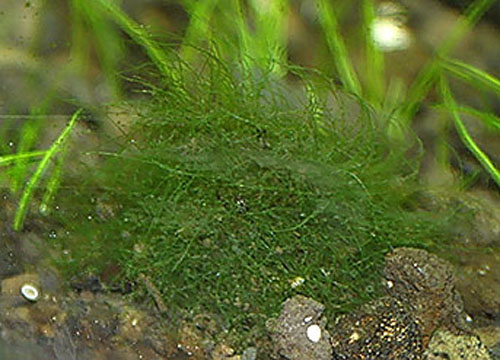While I have compiled a reference on getting rid of Algae in the Planted Aquarium, I did not talk extensively about spot treatment techniques to get rid of individual sections of algae where you just can’t seem to get rid of it. Fortunately, there are a number of tools available to target your attack:
Syringe Treatment:
This method uses a cooking syringe like you would use to inject marinade into a turkey, but for the marinade, you use either Hydrogen peroxide (H2O2) or Seachem Excel. First, it is very important that you temporarily turn off all of the flow in your aquarium. While circulation is incredibly important to maintain an algae-free aquarium, when you are spot-treating a specific area of the aquarium, you do not want H2O2 or Excel to disperse throughout the tank. Generally, I like to do spot treatments when I’m doing water changes, simply turning off the flow for the duration of the water change. Load the syringe full, and squirt the troublesome areas of your aquariums. I usually try to limit my spot treatments to a single syringe dose once every 2-3 days. Use caution, particularly with Seachem Excel, as prolonged exposure to over-dosing of these chemicals can injure or possibly kill your fish and invertebrates. I like to do a spot treatment to weaken the algae, and then let natural algae eaters like Amano Shrimp finish the job for me. Combined with water changes, proper CO2/nutrient levels/circulation, and an algae-fighting-crew, you’ll eliminate your troublesome algae in no time.
Old Toothbrush/Wire Brush:
Sometimes algae such as Black Brush Algae (BBA) completely covers hardscape items, making the syringe treatment seem excessive to fully rid yourself of the infestation. In these cases, it is often effective to vigorously brush the algae from the rock/wood with an old toothbrush. For large patches, it may be worth removing the hardscape item entirely, and scrubing it with a wire brush in a 5G bucket of water.
Bleach Treatment:
When you pull items from your tank, you have the opportunity to use harsher chemicals such as a watered-down 1:20 water/bleach solution to kill the algae. Never use bleach in your tank, except for completely empty aquariums — it will kill all of your plants and inhabitants otherwise. Ensure that whatever you bleach is rinsed thoroughly until you can no longer smell bleach on the item.
Spray Bottle:
For hardier plants such as Java Fern, Bolbitis, Anubias, etc you can remove them from the tank and spray them with H2O2 or Seachem Excel. Simply fill a small spray bottle with your solution, and lightly spray the plant. Always do this in a well ventilated area, preferably with a mask to protect yourself from any fumes. With this method, you do not need to inundate the plant, but simply a couple sprays, and then add it back into your aquarium. Alternatively, you can fill a small container with H2O2 and dip the plant for 1-2 minutes.
Conclusion:
Using a combination of these methods, along with the ones I’ve already outlined in my Algae in the Planted Aquarium article, you should be able to defeat any algae that enters your tank.

















